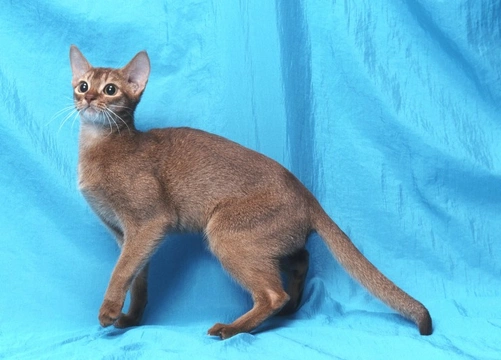
Tabby & Calico Shorthaired Cats, What’s the Difference?
There's no doubt that calico and tabby cats are great looking with their gorgeous patterned and striped coats. Tabbies are just that, lovely cats with specific colours and markings on their coats and are not a particular breed and the same can be said of calico cats.
The Lovely Tabby Cat
Tabby cats have gorgeous striped coats and a rather distinctive marking on their foreheads that looks very much like the letter 'M'. However with this said there are in fact four recognised tabby patterns which are as follows:
- Mackerel
- Classic
- Spotted
- Ticked
Of the four patterns, mackerel is the one that's most commonly seen, but if a tabby cat has lovely thick dark swirls on a lighter background, they are classed as having 'classic' tabby markings. When it comes to ticked tabby coats, these are a nice combination of dark and light fur that's evenly distributed over a cat’s body which gives the impression of a flecked coat. Spotted coats can be seen on Bengal cats and they often resemble rosettes. When it comes to colours, tabby cats can be:
- Cream
- Brown
- Ginger
- Silver
- Blue
The Lovely Tortoiseshell
Tortoiseshell is another gorgeous and quite commonly seen coat colouration and cats with this type of coat are often referred to as Torties. The combination of black, ginger and white gives cats a very distinctive and striking appearance. Interestingly, tortoiseshell cats are always female because they have the extra X chromosome responsible their colouring whereas male cats do not.
If a male cat has a tortoiseshell coat which is extremely rare, they are normally sterile simply because they have the extra chromosome which is an abnormality. More often than not, they also suffer from Klinefelter syndrome and this can shorten their life spans quite considerably. Some Torties have very pronounced colours whereas others have slightly more muted colours that cover their bodies giving their coats a faded and washed out appearance.
Tabbies and Tortoiseshell with White Spotting
Both tabby and tortoiseshell coated cats may have lovely patches of white dotted around their bodies and often the white"" is just added to their description with a great example being a 'ginger and white tabby'. With this said, descriptions also refer to the areas of the body where the white spotting appears which includes the following:
- Tabby cats with white paws are referred to as 'mitted'
- A white spot of fur on a tabby cat's chest is referred to as a 'locket'
- White spots on a tabby cat's tummy are called 'buttons'
- Cats that boast half white coats are referred to as 'bicolour'
- Cats that boast white bodies with just a few patches of tabby on it are called 'harlequins""
- Cats that only have tabby on their heads and tails with the rest of the body being white are referred to as 'vans' an example being the Turkish Van
Calico Cats
The term calico refers to cats that boast three colours in their coats and although most of these lovely looking felines are moggies, in some cases tri-colouring in breeds like the Persian and Manx cat is acceptable with many cat fanciers liking the more unusual and rare coat colours in the two breeds.
Calico cats are lovely with their patches of ginger and black markings on large patches of white fur. However, it can be a little confusing because if a cat only boasts a little amount of white fur, they are referred to as tortoiseshell and white, so it's the size of the white patches that determines whether a cat is calico or tortoiseshell. Cats with a more faded look about their fur have lovely blue, cream and white patches on their coats which gives them a delightful washed out appearance. Cats with calico markings are generally always female just like torties. Calico cats come in all sorts of colour combinations which includes a lovely diluted variation much like seen in the tortoiseshell.
Conclusion
Most people are familiar with tabby cats but not calicoes. However, neither of the two are specific breeds, but the names are more a description of their coats, colourings and markings. Some tabbies have very distinct patterns on their coats and the same can be said of calicoes, however, some of these delightful looking felines also boast quite faded looking patterns and colouring which is referred to as ‘diluted’ which gives the impression of the colour having been washed out of their coats. Of all the tabbies around, the most recognised pattern has to be the ‘mackerel’, and with the calicoes it has to be the pussycats that boast a delightful tri-coloured coat.
""



